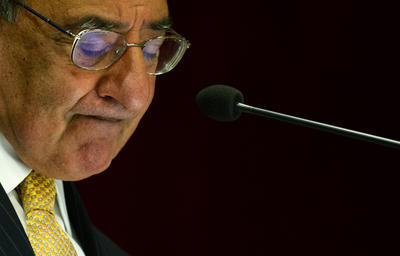sticking points remain. First, India’s nuclear liability law, designed to guard against a repeat of the Bhopal disaster, made the manufacturers of nuclear reactors liable for accidents caused by faulty equipment. This had a significant chilling effect on investment in India by US nuclear corporations such as General Electric and Westinghouse. The US government was concerned that, after all the hard work of gaining an exemption for India in the Nuclear Suppliers Group, US companies may not benefit from the Indian nuclear market. Second, the US insisted that India sign the Communication Interoperability and Security Memorandum of Agreement (CISMOA) and the Logistics Support Agreement before it would agree to sell India sophisticated military technology, such as various secure systems on the C-130J and C-17 Globemaster III transport aircrafts. These agreements would have improved systems interoperability and logistical support between the two countries’ militaries, but India was reluctant to sign them, fearing it would become too closely tied to the US.
But there has been some progress on nuclear issues recently, though the legal problems still have not been fully resolved. During his visit, Panetta also rolled back the US insistence on CISMOA. This signals a thawing in the relationship and, in light of its strategic repositioning to Asia, shows that the US increasingly recognises the need for Indian support in Asian multilateralism as a balance against China. Panetta’s description of India as the ‘linchpin’ of Washington’s Asia Pacific ‘rebalancing’ only emphasises this.
This was reaffirmed in the recent US–India Strategic Dialogue in Washington, which came shortly after Panetta’s visit to New Delhi. The two countries agreed to increase cooperation in Asia Pacific and Indian Ocean multilateral organisations, such as the ASEAN Defence Ministers’ Meeting, the East Asia Summit and the Indian Ocean Rim Association for Regional Cooperation (IOR-ARC). The US is particularly interested in becoming a dialogue partner in IOR-ARC, which India has said it will support. This is significant given China’s increasing interests in the region, including investment in various port facilities around the Indian Ocean rim. IOR-ARC currently comprises only Indian Ocean littoral states, but China is a dialogue partner. Given the vital sea lines of communication that flow across the Indian Ocean, particularly from the Persian Gulf, many nations — including the US — have strong interests in keeping this region secure.
In addition to wooing India as an important piece of the Asia Pacific puzzle, the US has also made it clear that it would like to see greater Indian involvement in Afghanistan after the 2014 drawdown. This is in contrast to its previous position — before the US’s relationship with Pakistan deteriorated following the killing of Osama bin Laden — which saw the US express reluctance about too great an Indian presence in Afghanistan for fear it could upset the strategic balance in South Asia. India has made no secret that its strategy in Afghanistan is aimed at preventing Pakistan from gaining ‘strategic depth’. But the US now seems less concerned about the potential for this to intensify India–Pakistan tensions than it is about the overall future of Afghanistan.
The US’s push for India to play a greater role in Afghanistan after 2014 indicates its concerns about the potential powers stepping in to fill the vacuum. Iran, Saudi Arabia, Russia and China are particularly worrisome for Washington. Indeed, the Chinese- and Russian-led Shanghai Cooperation Organisation has already indicated it will seek greater economic engagement in Afghanistan after the US withdrawal, and has not ruled out also deepening strategic and military connections.
The US and India’s willingness to discuss serious strategic issues beyond issues within South Asia — including the evolving Asia Pacific security and economic architecture — shows a gradual maturing of the relationship. Serious complicating factors naturally remain, including both the Indian and US relationships with China and, to a lesser extent, with Pakistan, as well as matters of both strategic will and capability. The extent of India’s willingness to become intimately involved in Asia Pacific politics remains uncertain; it will face difficulties in updating its non-alignment strategy for the 21st century. But with the US increasingly hedging its bets in Asia and India striving for greater influence, it is likely that the India–US relationship will only continue to grow stronger.
Louise Merrington recently completed her PhD on India–China relations at the Australian National University.

